Set Review ➟ 21315 Pop-Up Book
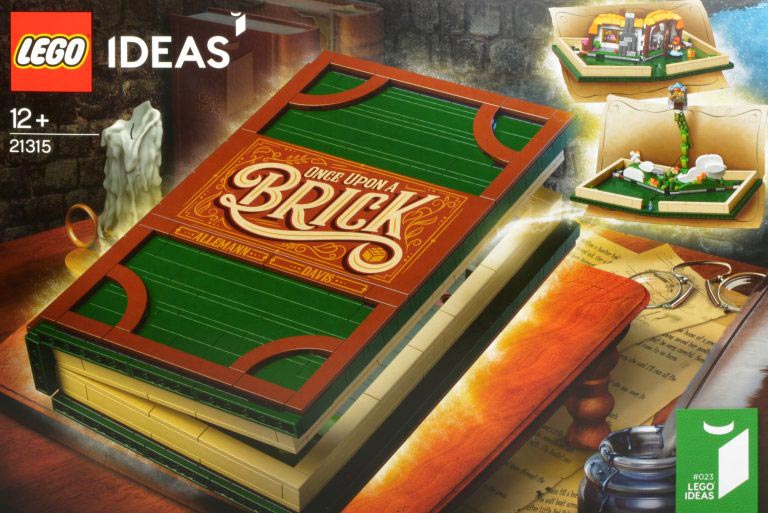
Once upon a time…two AFOLs uploaded a project of a children’s book to LEGO Ideas, they reached 10,000 votes and LEGO selected their set to produce it. The new set of LEGO Ideas is a delight, that touches the sensitive fiber of all the children whose parents tell them stories every night, and of us older ones who remember our days as a child.
Instructions
The instructions begin with a review of the creators of the set, Jason and Grant, and the LEGO designers who have collaborated with the set. The following two are dedicated to the Pop-up books and the two stories referred to in the set: "Little Red Riding Hood" and "Jack and the Beanstalk". For each of the stories, there is an illustration represented with humans, and the same illustration set in the LEGO set.
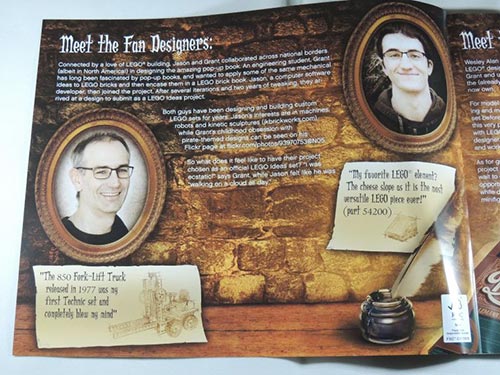
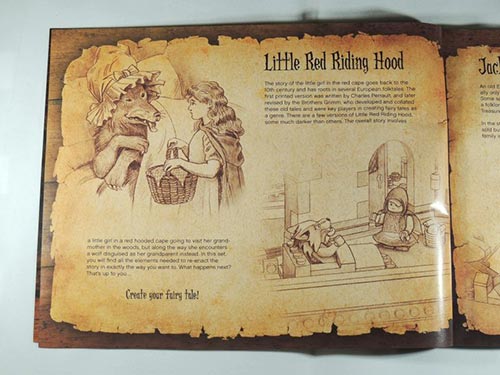
The set
The set is built in 6 steps. In the first two, the covers of the book are built. It is not a complicated construction, it is simply a structure of bricks, bricks with side studs and plates. The covers and the spine are articulated with hinges. Bricks with stud are both on the outside and inside of the book. On the outside they are used to put the decoration on the lid. In the inner part they are used to fix "the pages" and to place the elements that will constitute the scenes of the stories. I want to highlight here the printed tiles that are placed on the cover of the book. A brown 8x16 tile with the inscription "Once upon a brick", and two brown 1x6 tiles with the last names of the AFOL creators of the set, Jason Allemann and Grant Davis.


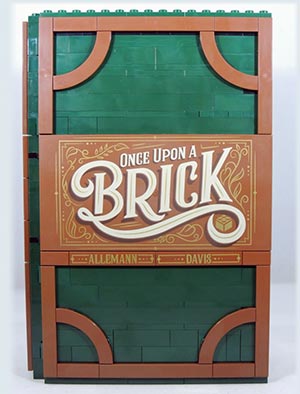
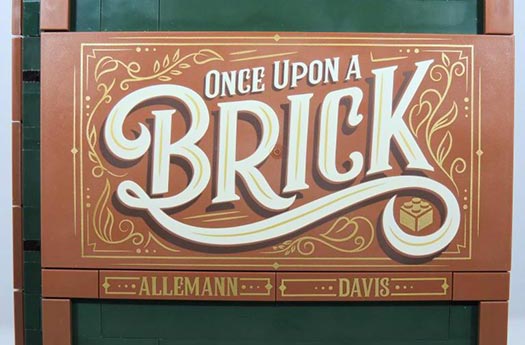
In steps 3 and 4 we built the setting of the story of Little Red Riding Hood. There are 3 elements to build: 1) The bed, built so that you can put the grandmother or the wolf in it. 2) The small table with a coffee pot and a cup, to eat the cookies that Little Red Riding Hood brings 3) The house, which is the element that bends when the book is closed.
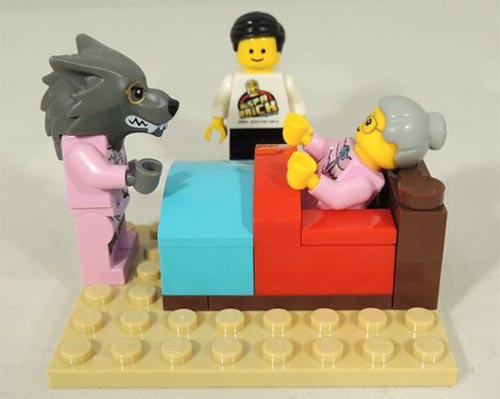
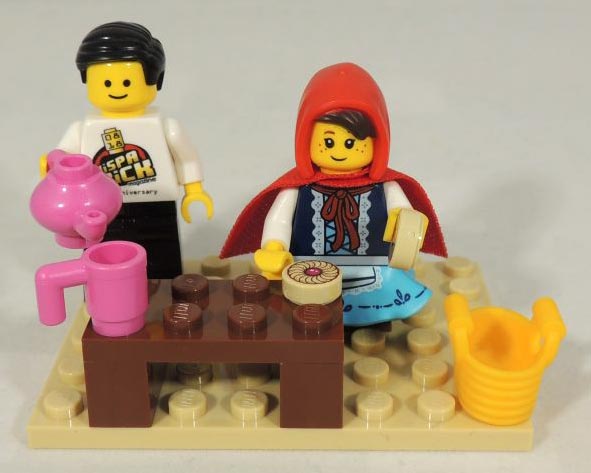
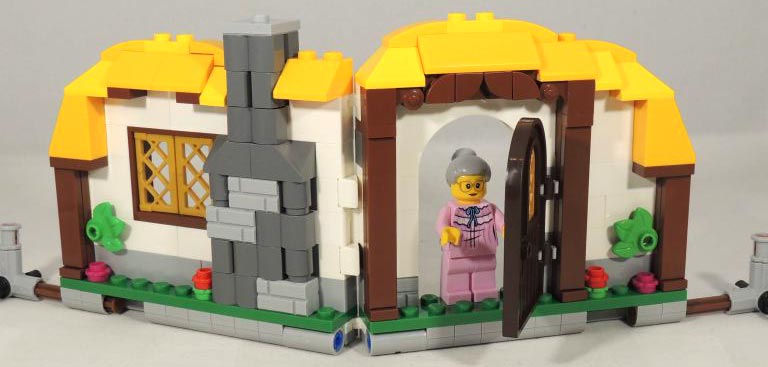
The first two elements are quite simple. They are built so that they are functional, and that they do not collide with each other when the book is closed.
The house is really a facade, with a front door, a window, a fireplace and some plants. The facade is quite detailed, with several decorative elements, such as wooden columns. The combination of colors, without being strident, is quite striking: white walls, a gray fireplace and a ceiling in two shades of gray.
The mechanism that allows the facade to fold is much simpler than I expected, and it works smoothly. In addition it is very well concealed, so you do not see much more than the pin that connects with the book and the axle that makes the movement.
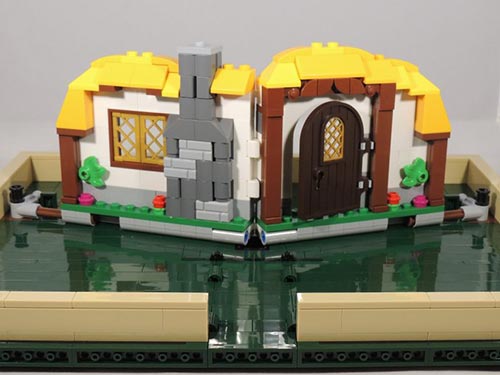
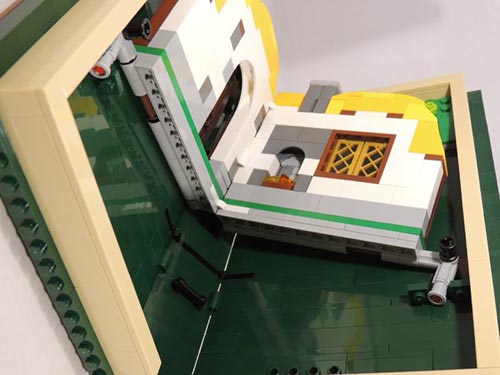
Finally, with building steps 5 and 6 the part corresponding to the story Jack and the Beanstalk are built. In this case the stage is made in microscale since it has to reproduce the scenario in which Jack lives, the giant bean plant and the Giant’s castle. The part of the landscape represents mountains, trees, 4 houses, a mill and the clouds.
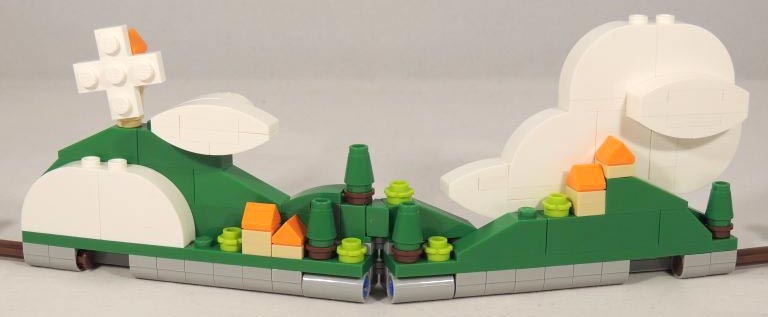
This part is folded in the same way Little Red’s grandmother’s house when the book is closed. Behind this, there is a second element that includes Jack’s house, the bean plant and the Giant’s castle. This element is located on the spine of the book, but it is too tall. To close the book there is a small mechanism that raises and lowers the castle. Very simple but effective.
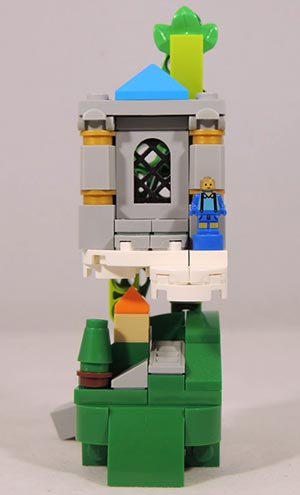
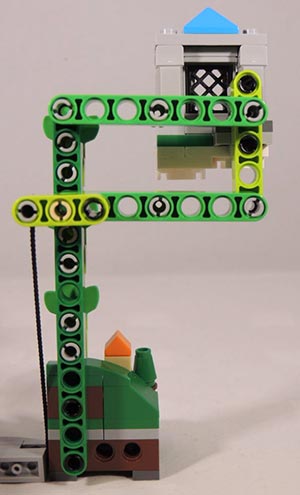

Minifigs
The set has four minifigures: Little Red Riding Hood, the grandmother, the wolf, the giant, and a nanofig corresponding to Jack.
The figures have a special decoration for this set. Little Red Riding Hood is wearing a skirt-shaped dress and accessory. You can not miss its characteristic red cape and a hood that includes bangs.
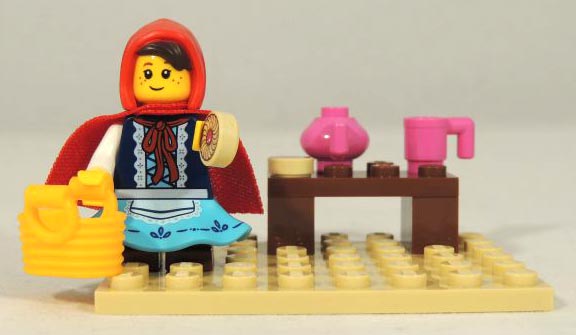
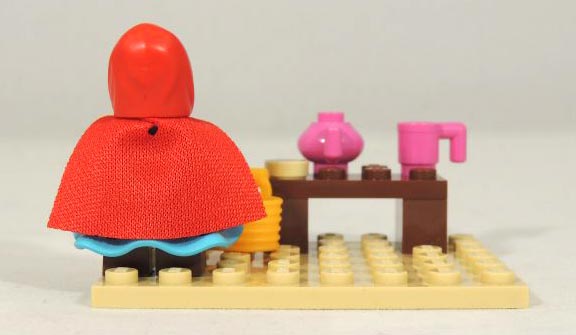
The grandmother wears pink pajamas and her characteristic glasses.
The wolf wears the same pink pajamas, but torn by the struggle with the grandmother. The wolf’s head is molded and has very elaborate printing, with a nose, teeth and the glasses that he has taken from the grandmother.
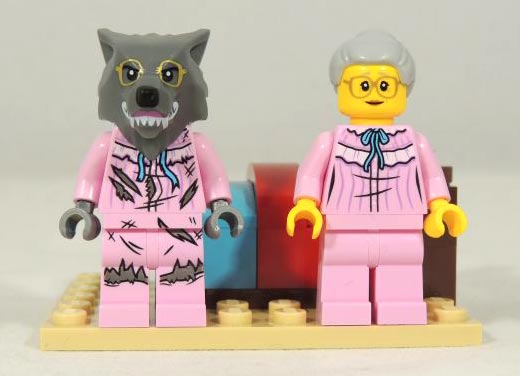
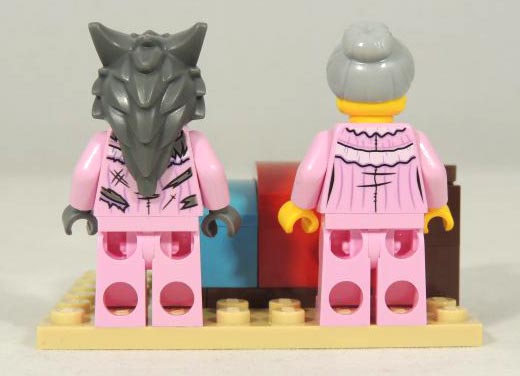
The giant wears a shirt and a waistcoat. In one of the pockets of the waistcoat he has a goose, and he wears a kind of leather band in which he carries some barrels and some skulls (which are minifig skeleton heads).
The nanofig is decorated and you can see Jack’s face, hair, clothes and legs.
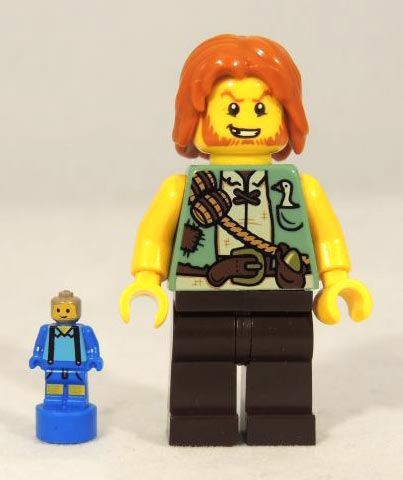
Conclusions
The set has surprised me very pleasantly. I was quite skeptical when I heard about the decision, since I thought it would be very complex. On the other hand, the set has the size of any book that you can find at home. The interior has a very high level level of detail considering that it must be folded inside the book.
I like that two stories have been added, since it increases the versatility and interest of the set. And, in addition, it offers new figures that many people will recognize from their childhood.
The only thing I don’t like is the box. Historically, Ideas sets used to come with "Architecture" style boxes, with a flap that allows you to keep it as part of the collectible element, and in many cases to keep built set inside it. In this case it is a standard box.
We wish to thank LEGO® for providing the sets for review. However, LEGO® does not endorse or support the opinions we publish about their sets.
5358